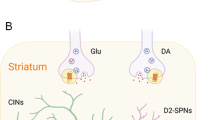Abstract
Extraordinary progress has been made in the molecular, genetic, anatomical, and pharmacological characterization of dopamine D4 receptors in animal and human brain. Clarification of the neurochemical and physiological roles of these cerebral receptors is emerging. Postmortem neuropathological studies have inconsistently linked D4 receptors to psychotic disorders, and genetic studies have failed to sustain conclusive associations between D4 receptors and schizophrenia. However, associations are emerging between D4 receptors and other neuropsychiatric disorders, including attention deficit hyperactivity disorder, mood disorders, and Parkinson's disease, as well as specific personality traits such as novelty-seeking. Selective D4 agonists and antagonists have been developed as useful experimental probes. D4antagonists, so far, have proved ineffective in treatment of schizophrenia, but testing in a broader range of disorders may yield clinically useful drugs. D4 receptors appear to have broad implications for the pathophysiology of neuropsychiatric illnesses and their improved treatment.
Similar content being viewed by others
Author information
Authors and Affiliations
Corresponding author
Rights and permissions
About this article
Cite this article
Tarazi, F., Baldessarini, R. Dopamine D4 receptors: significance for molecular psychiatry at the millennium. Mol Psychiatry 4, 529–538 (1999). https://doi.org/10.1038/sj.mp.4000674
Received:
Accepted:
Published:
Issue Date:
DOI: https://doi.org/10.1038/sj.mp.4000674
- Springer Nature Limited
Keywords
This article is cited by
-
The role of altruistic behavior and genetic influence of DRD4 in resource gain and resource loss spirals
Asia Pacific Journal of Management (2023)
-
The genetic factors influencing the development of trichotillomania
Journal of Genetics (2012)
-
Peripheral biomarkers of cognitive response to dopamine receptor agonist treatment
Psychopharmacology (2011)
-
Nucleophilic substitution of the acetoxy group in 3-methylbenzoylaminomethyl acetate
Russian Chemical Bulletin (2011)
-
Physiogenomic Analysis of Localized fMRI Brain Activity in Schizophrenia
Annals of Biomedical Engineering (2008)




